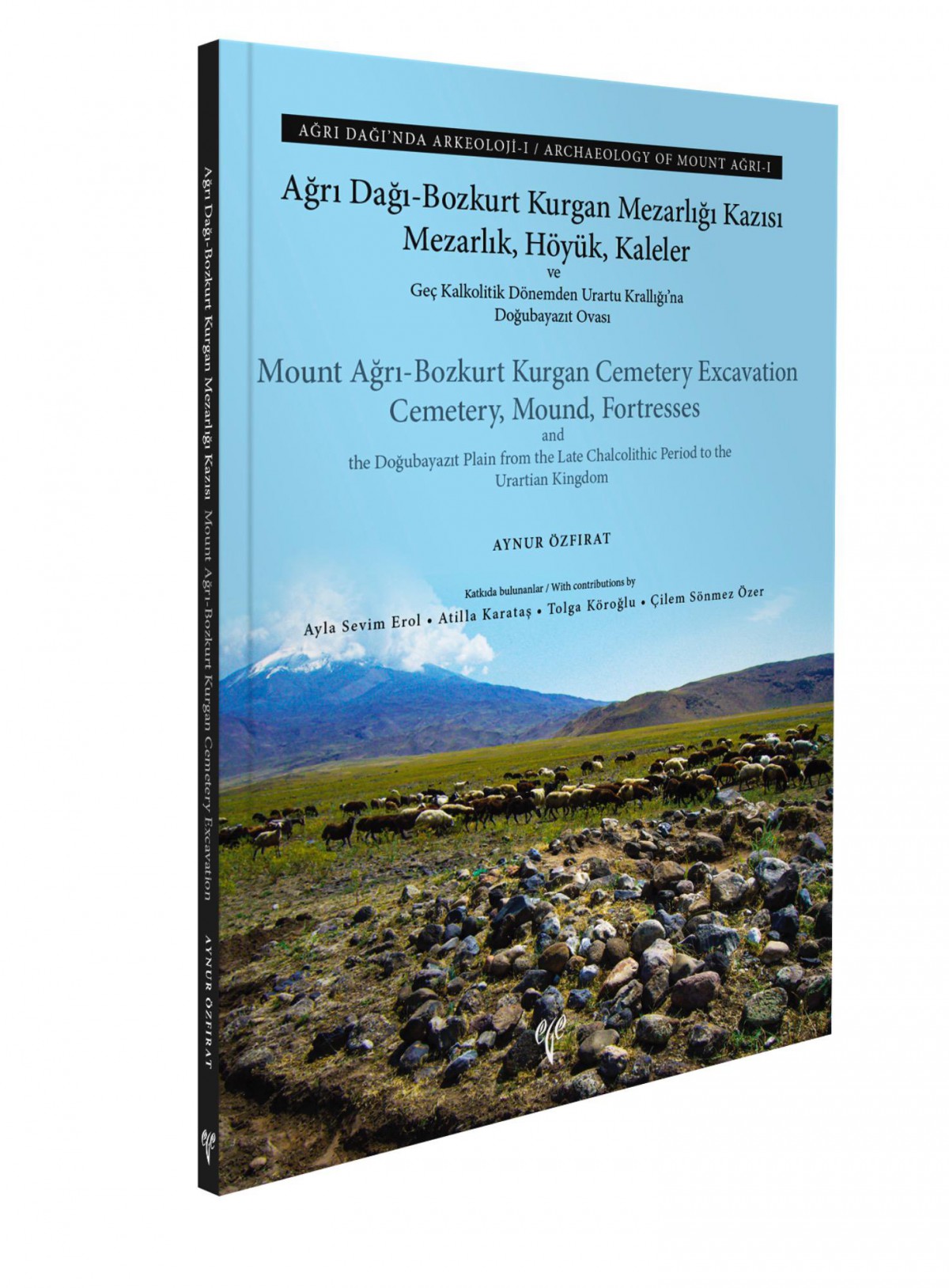200 pp, color figures, pb, English and Turkish bilingual.
One of the most important contributions of the Bozkurt Kurgan Necropolis excavations, which are described in this work, is that it reveals the existence of kurgan-type tomb monuments in Turkey. The results of the Bozkurt excavations and the regional survey carried out by Prof. Dr. Aynur Özfırat provide evidence for the spread and dating of these kurgans, whose existence in eastern Anatolia was previously unknown. These studies have revealed that the kurgan-type burial tradition of the Eurasian steppes spread south, reaching eastern Anatolia through the Caucasus, in the last centuries of the fourth millennium BC. The Doğubayazıt Plain marks the southwestern limit of the spread of the kurgan cultures of Eurasia and Asia.
Chapter 1 (Aynur Özfırat)
Introduction
a. Archaeological Excavations on Mt. Ağrı
b. Settlement Topography
Chapter 2 (Aynur Özfırat)
Kurgans of Eastern Anatolia
Chapter 3 (Aynur Özfırat)
Excavations of the Bozkurt Kurgan Cemetery
Chapter 4 (Aynur Özfırat)
The Cultural and Chronological Frame of the Bozkurt Settlement Complex
a. Settlement Complex
b. Settlement Periods
Middle-Late Chalcolithic Period and Early Bronze Age
Middle Bronze Age
Late Bronze-Early Iron Age: Pre-Urartu Period
Middle Iron Age: The Kingdom of Urartu
Kurgan Cemeteries
Chapter 5 (Atilla Karataş)
The Geographical Structure and Holocene Paleography of the Southwestern Foothills of Büyük Ağrı Mountain
Chapter 6 (Ayla Sevim Erol – Tolga Köroğlu – Çilem Sönmez Sözer)
Anthropological Analysis of Bozkurt Skeleton




